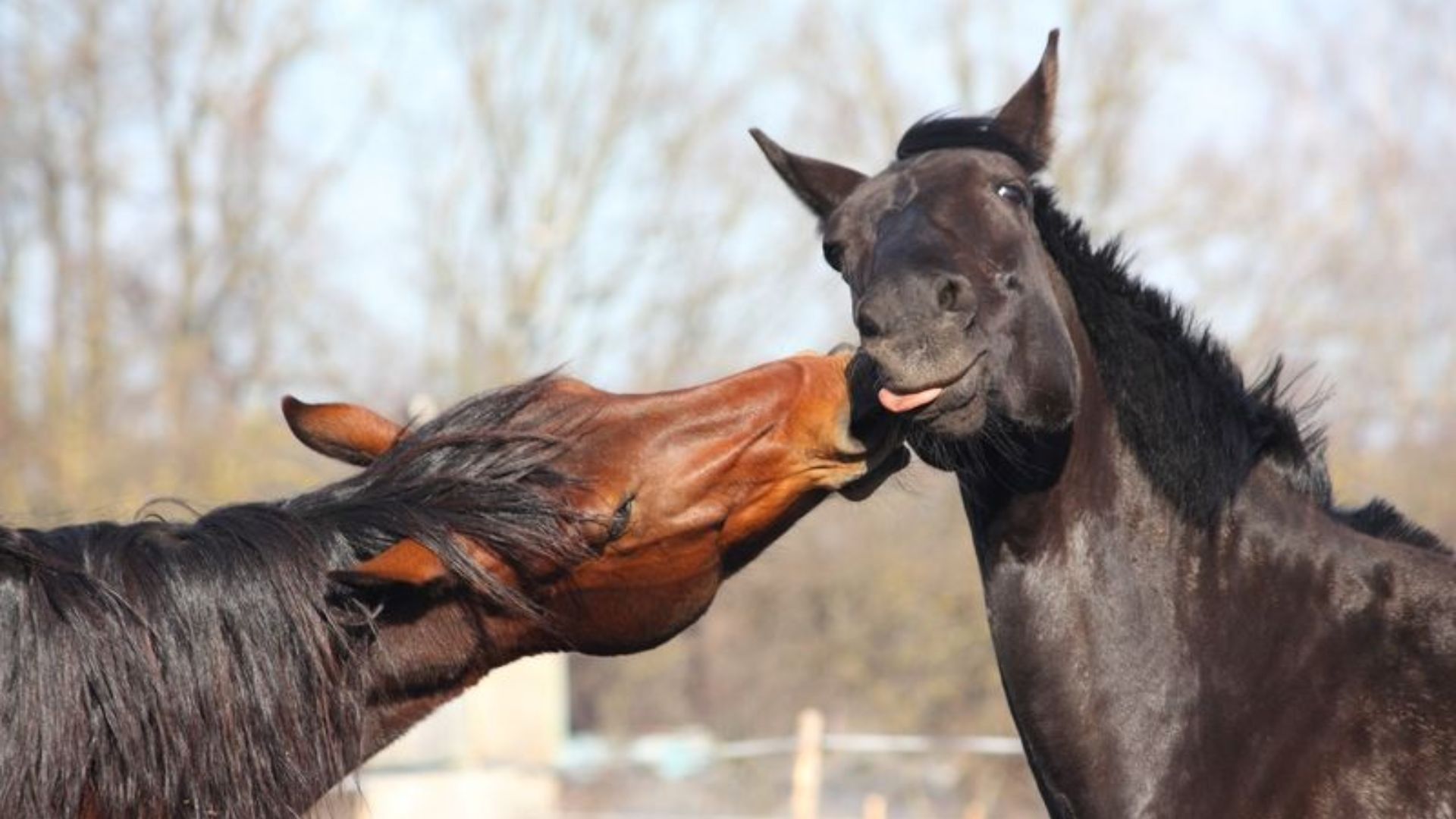Horses, like any other animals, express their emotions through various behaviors and physical cues, providing insight into their well-being and overall happiness.
As attentive caretakers, understanding these signs is essential for building trust, strengthening your bond, and ensuring your horse feels content and secure in its environment.
Horses are highly social and sensitive animals, and their happiness is deeply connected to their physical health, emotional comfort, and the quality of care they receive.
Recognizing the subtle and not-so-subtle ways a horse displays happiness can help you respond to their needs more effectively.
From relaxed body language to enthusiastic interactions, these indicators reflect a thriving, well-cared-for animal.
By paying attention to their unique expressions of joy and comfort, you can ensure your horse feels loved, respected, and supported. Here are some clear and unmistakable signs that your horse is happy, healthy, and thriving in its environment.
1. Relaxed Ears
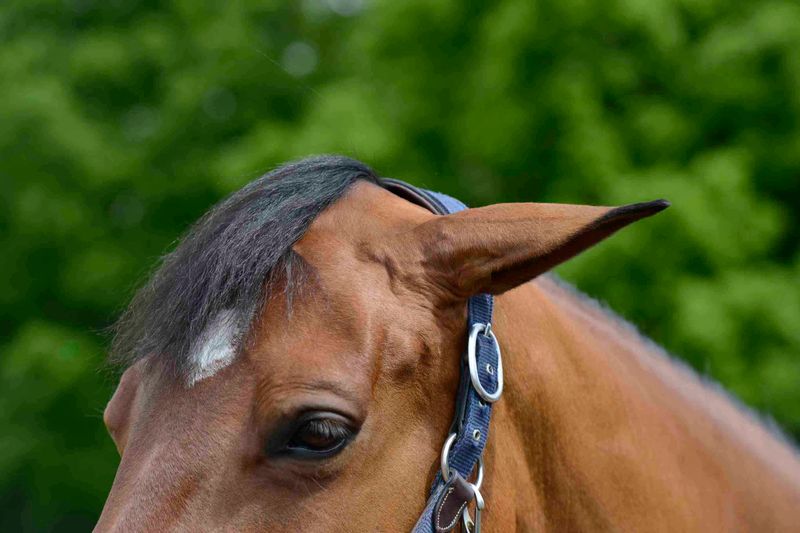
Horses communicate a lot through their ears. When your horse is happy, its ears will often be in a relaxed, floppy position.
This indicates that your horse is at ease with its surroundings. Unlike the alert and erect ears of a curious or nervous horse, relaxed ears show a sense of comfort.
In a happy state, your horse’s ears might also gently swivel, picking up sounds from the environment but without any sign of stress. This subtle movement should not be confused with the rapid flicking of an anxious horse. Taking note of this ear position can give you insights into how your horse feels.
If you observe your horse’s ears and notice they are mostly relaxed, it’s a good indication that your horse feels secure and content.
However, always consider other body language cues alongside ear position to get a complete sense of your horse’s emotional state.
2. Soft Eyes
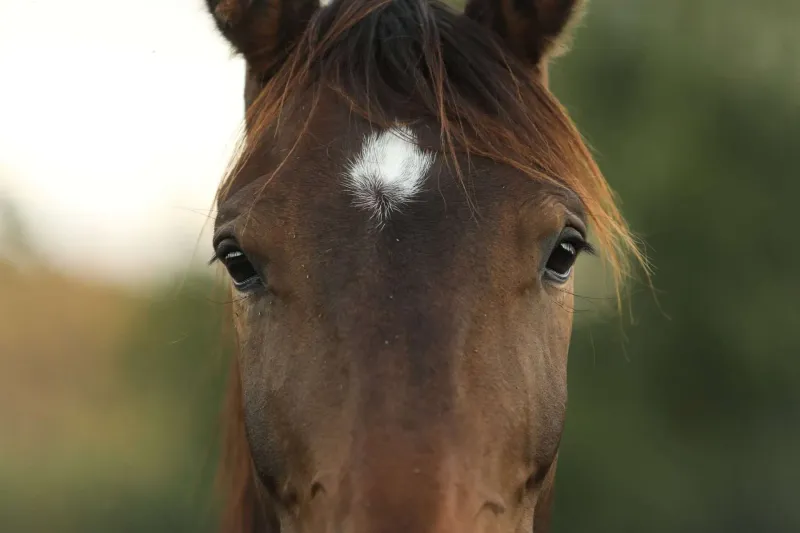
The eyes of a horse can tell you a lot about its emotional state. Horses that are happy often have soft, gentle eyes.
This means the eyelids are relaxed, and there’s a calmness about their gaze. The absence of tension around the eyes is a positive sign.
A horse with soft eyes is likely feeling safe and secure. You might even notice that their eyes appear almost half-closed, as if they are in a state of peaceful contentment. This relaxed eye expression indicates trust and comfort.
Watching for this sign is essential, especially if your horse is new to its environment. Soft eyes show that the horse is adapting well and feels at home. Always pair this sign with other indicators of happiness to ensure your horse is truly thriving.
3. Calm Tail Movements
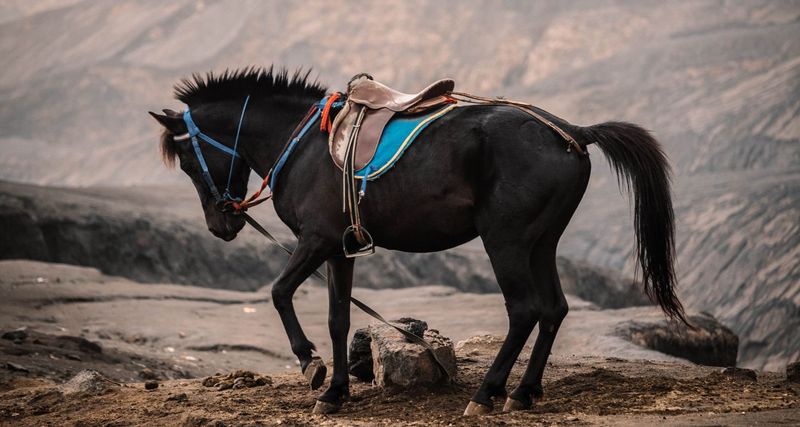
Tail movements in horses can be quite telling. A happy horse will have a calm and gentle tail swish, indicating that it is comfortable and relaxed. This is very different from a horse that swishes its tail rapidly due to irritation or discomfort.
When observing your horse, look for those slow, rhythmic tail movements. These are signs that your horse is enjoying its surroundings.
Rapid or aggressive tail flicking, however, may indicate that something is bothering your horse, such as insects or irritation.
In a contented horse, you might also see the tail hanging loosely and moving with the horse’s natural rhythm as it walks. Such movements are positive indicators of a relaxed and happy horse. Always consider this in conjunction with other body language to get a full picture of your horse’s well-being.
4. Nostrils At Ease
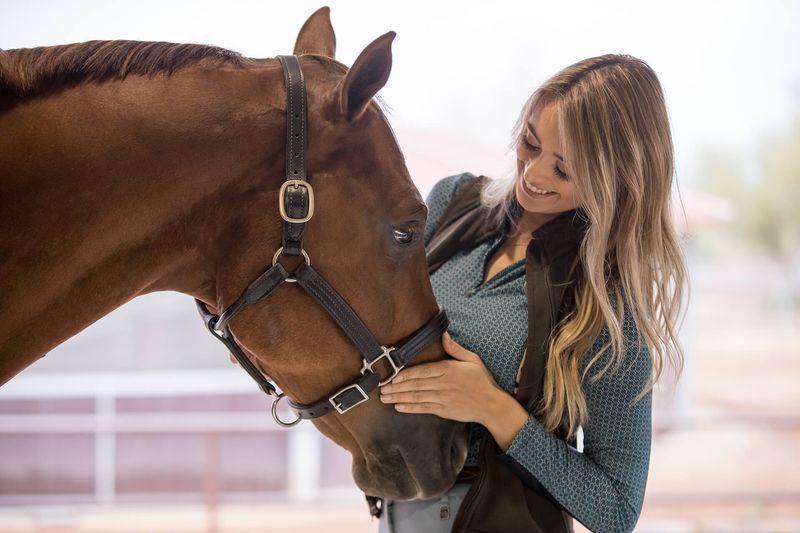
When a horse is happy, its nostrils will be relaxed and softly flaring. This is a sign that the horse is breathing easily and is not under stress.
Tight or pinched nostrils can indicate anxiety or discomfort, so observing this area can be quite revealing.
A relaxed nostril implies that the horse is at peace. You might notice that their breathing is even and calm, which further supports the notion of contentment. A horse that feels safe will show this through its relaxed facial expressions.
Take note of your horse’s nostrils as part of assessing its mood. This subtle sign, when paired with other positive indicators, gives you a clearer understanding of your horse’s state of mind. Happy horses breathe easy, and their nostrils reflect this tranquility.
5. Playful Behavior
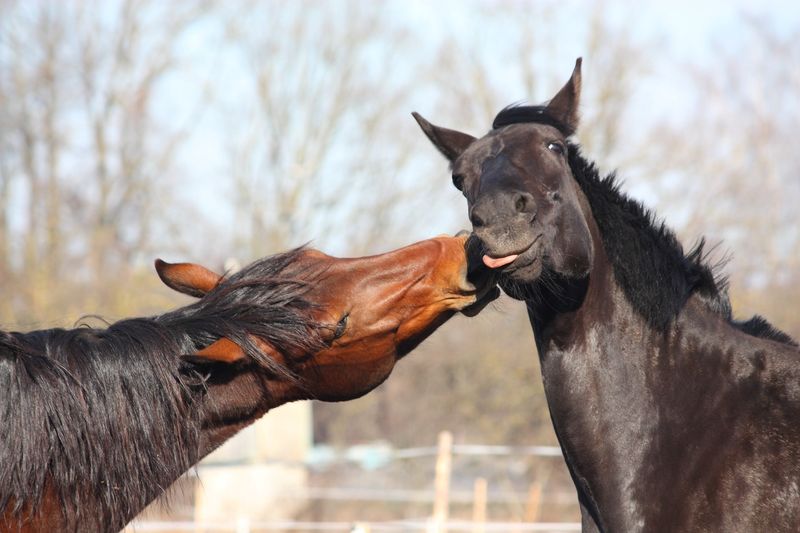
Playfulness is a hallmark of a happy horse. When horses feel good, they often engage in playful behaviors, such as running, bucking, or nudging each other. This is their way of expressing joy and energy, much like children at play.
In a group setting, happy horses will often interact with one another in friendly ways. They might chase each other around or engage in gentle nipping and bumping.
Such interactions are healthy and show that your horse feels comfortable in its environment.
Even when alone, a happy horse might show playfulness by spontaneously running or kicking up its heels. These joyful displays are signs that your horse is both physically and mentally content. Encourage this behavior by providing ample space and social opportunities.
6. Healthy Appetite
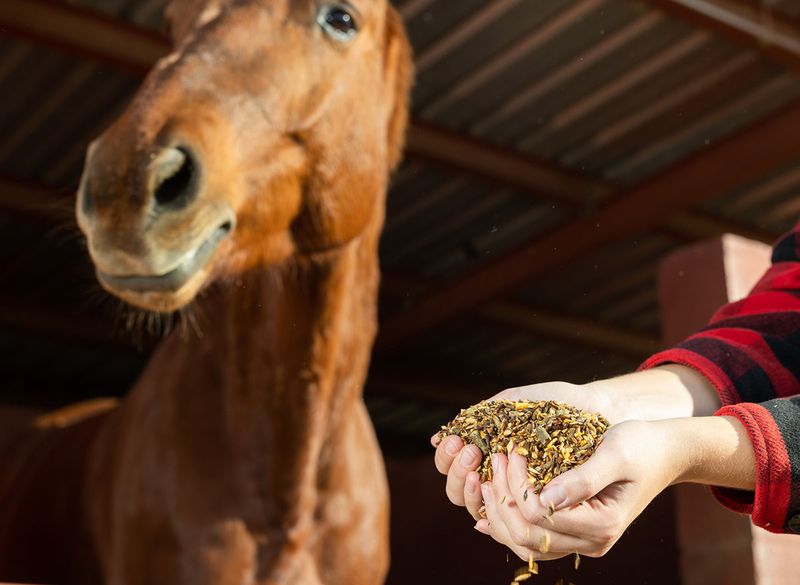
A happy horse typically has a good appetite. Eating well is a sign that your horse is feeling healthy and comfortable. When a horse relishes its meals, it often indicates that it is in a positive state of mind.
Notice how your horse approaches feeding time. A content horse will eagerly await its meals and eat with enthusiasm. This is different from a horse that either refuses food or eats listlessly, which can be a sign of stress or illness.
Minding your horse’s diet and ensuring that it is eating properly is crucial. A healthy appetite is one of the simplest yet most reliable indicators of equine happiness. Ensuring your horse gets the nutrition it needs will help maintain this positive attitude.
7. Smooth Coat
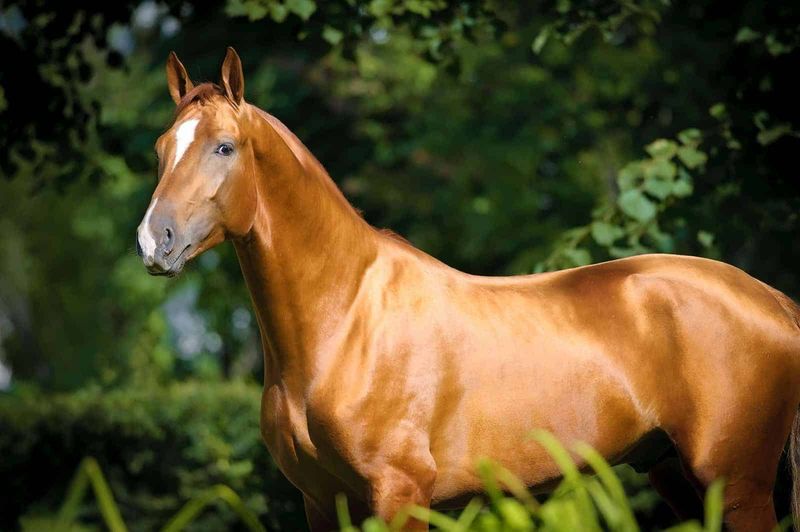
The condition of your horse’s coat can speak volumes about its happiness. A smooth, shiny coat is often a sign that your horse is healthy and content. This is because happiness and health often go hand in hand in horses.
Regular grooming and a balanced diet contribute to a healthy coat. When a horse is happy, its body functions optimally, contributing to that glossy appearance. A dull coat, on the other hand, might suggest stress or nutritional deficiencies.
Paying attention to your horse’s coat is essential. It not only reflects their happiness but also their overall well-being. Ensure your horse’s happiness by providing the care and nutrition it needs to maintain a beautiful coat.
8. Willingness To Work
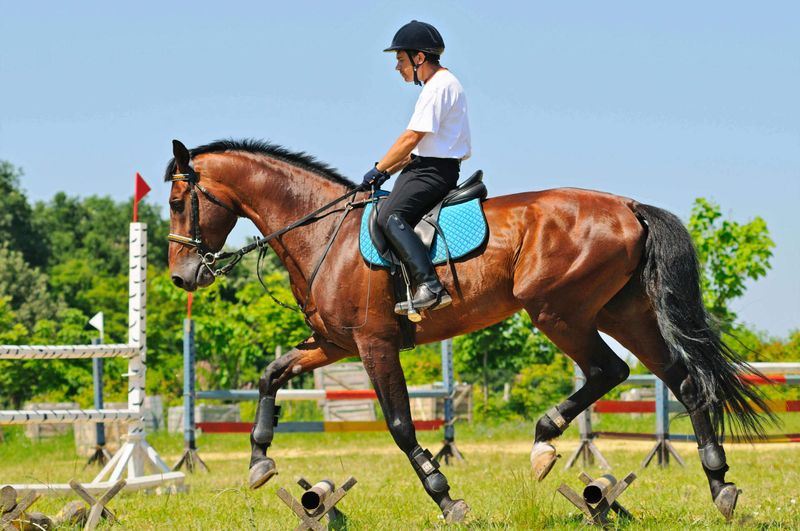
A happy horse is often eager and willing to work. When horses enjoy their activities, they show enthusiasm and cooperation. This willingness indicates a positive relationship with their human companions and a love for their tasks.
Observe how your horse responds to training or riding sessions. A horse that is happy will be more compliant and ready to engage. This is a stark contrast to a horse that resists, which can be a sign of discomfort or unhappiness.
Fostering a happy working environment involves understanding your horse’s limits and providing positive reinforcement. When your horse is willing to work, it means you have built a trusting and enjoyable partnership. This cooperation is a clear sign of happiness.
9. Relaxed Body Posture
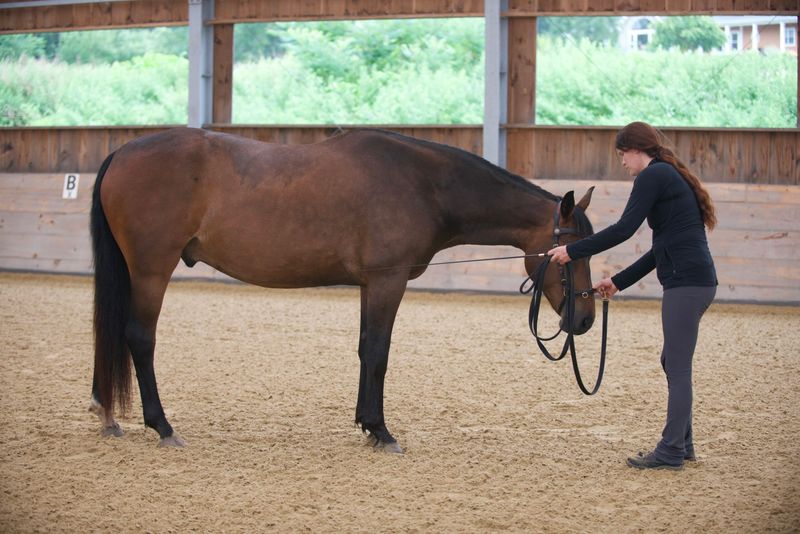
Body posture is a key indicator of a horse’s emotional state. A happy horse typically exhibits a relaxed body posture. This means that the horse stands comfortably, with loose muscles and a calm demeanor.
Notice how your horse carries itself. A relaxed horse might have a slightly lowered head and a soft stance. These are signs that the horse is at ease and free from stress or tension.
Understanding your horse’s body language is crucial in assessing its happiness. A relaxed posture, combined with other positive signs, helps confirm that your horse feels secure and content in its surroundings.

